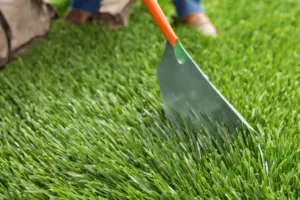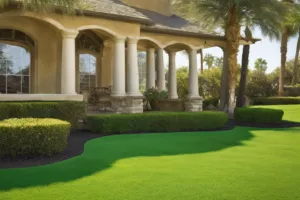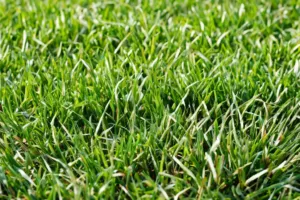
Introduction to St Augustine Grass and Its Primary Benefit
St. Augustine grass, scientifically known as Stenotaphrum secundatum, is a popular warm-season lawn grass that is widely used in various parts of the world. Known for its ability to tolerate shade, high temperatures, salt and, to a certain extent, drought, it’s particularly beneficial in areas that experience warm climates. The primary advantage of St. Augustine grass is its aggressive growth habit, which allows it to spread rapidly and cover large areas quickly, forming a thick, lush carpet of grass.
Methods of Spreading St Augustine Grass
St. Augustine grass does not produce a viable seed, which is unusual for grass species. Instead, it spreads via two primary methods: stolons and plugs.
Stolons
Also known as ‘runners,’ stolons are the primary means by which St. Augustine grass spreads. These are long, creeping stems or runners that grow above the ground. They extend horizontally from the grass, rooting at the nodes or joints whenever they come in contact with the soil. This allows the grass to spread rapidly and cover large areas in a relatively short period.
Plugs
Plugs are small, square patches of St. Augustine grass with roots attached. They are typically planted in holes or spaces in the lawn, about a foot apart. Over time, the plugs expand through the growth of stolons, eventually merging together to form a continuous lawn.
Considerations for Specific Groups or Situations
While St. Augustine grass has many advantages, there are certain considerations to keep in mind, particularly for those living in colder climates or areas prone to certain pests or diseases.
Temperature Tolerance
Despite its hardiness, St. Augustine grass is not well-suited to areas with cold winters. It’s a warm-season grass that thrives in tropical and subtropical regions.
Pest and Disease Tolerance
St. Augustine grass is susceptible to certain pests like chinch bugs and diseases such as brown patch disease. Regular monitoring and timely intervention are needed to maintain a healthy lawn.
Practical Advice for Spreading St Augustine Grass
For best results when trying to spread St. Augustine grass, consider the following tips:
Proper Planting
Whether you’re using plugs or sod, it’s important to plant St. Augustine grass properly. This includes preparing the soil, ensuring proper spacing, and watering frequently until the grass is established.
Regular Mowing
Regular mowing encourages the growth of stolons, helping the grass to spread faster. However, avoid cutting the grass too short as this can stress it and slow down its growth.
Fertilization
Proper fertilization promotes the rapid growth and spread of St. Augustine grass. Use a high-quality lawn fertilizer and follow the manufacturer’s instructions for best results.
Watering
While St. Augustine grass is somewhat drought-tolerant, regular watering helps it maintain its health and vigor, promoting faster growth and spread.
St. Augustine grass’s ability to spread rapidly and create a dense, lush lawn makes it a popular choice for homeowners in warm climates. Understanding the mechanism by which it spreads and the best practices for encouraging its growth can help you maintain a beautiful, healthy lawn.

Bob Green, a passionate lawn care enthusiast with over two decades of landscaping experience, is this website’s proud owner. His vast knowledge of horticulture and dedication to helping homeowners maintain beautiful lawns are reflected in the valuable content he shares on his platform. John has always been interested in Agrostology.














